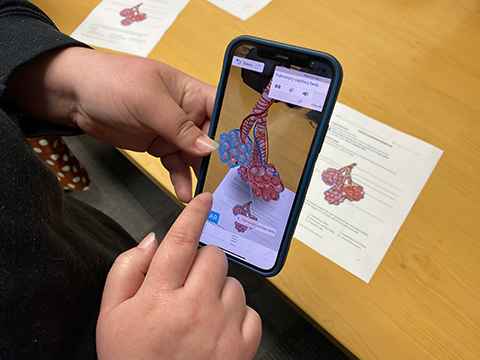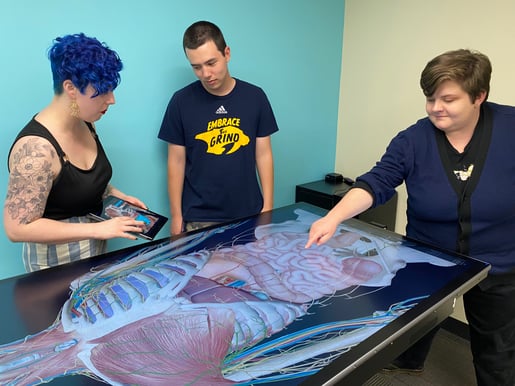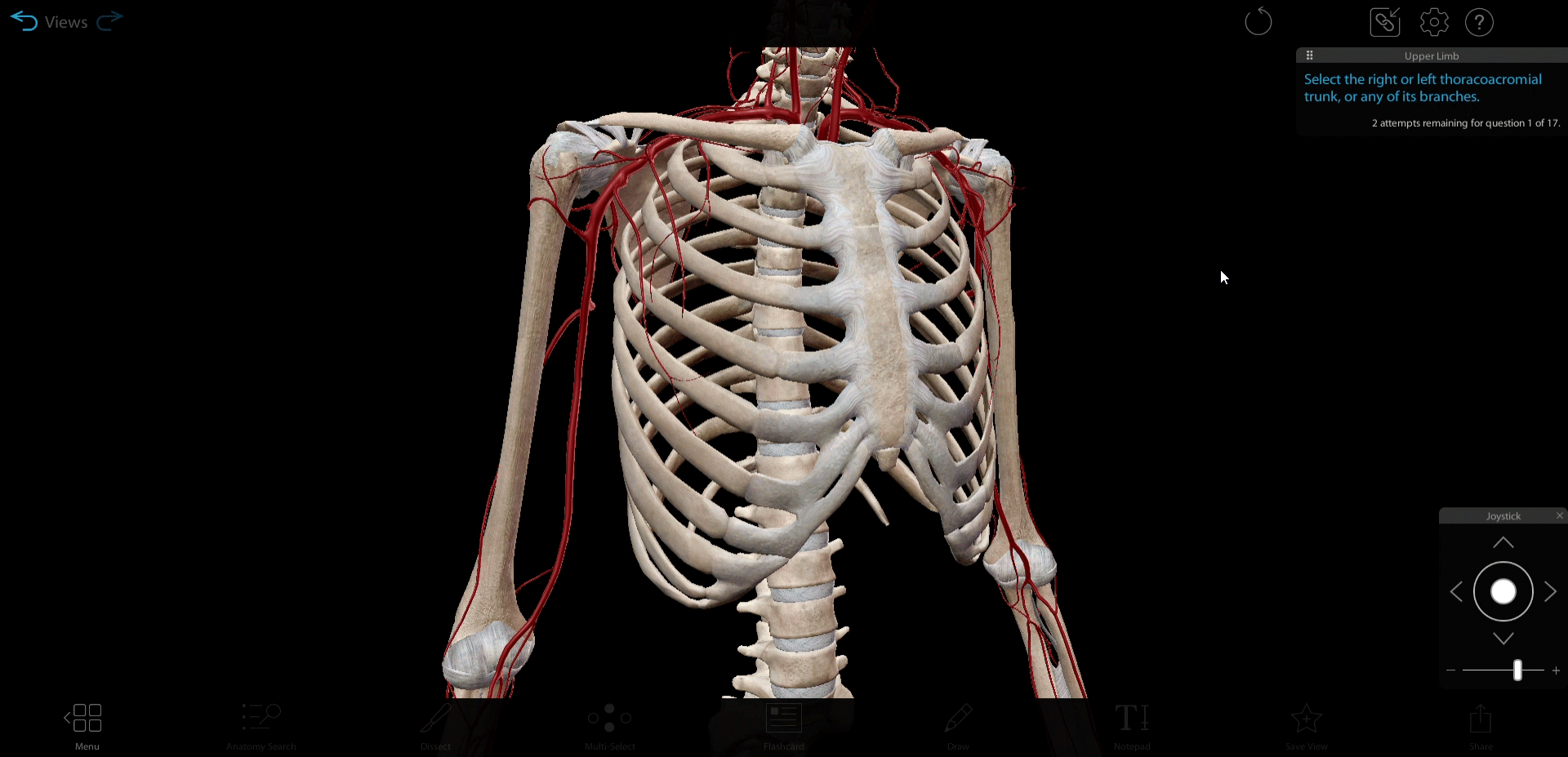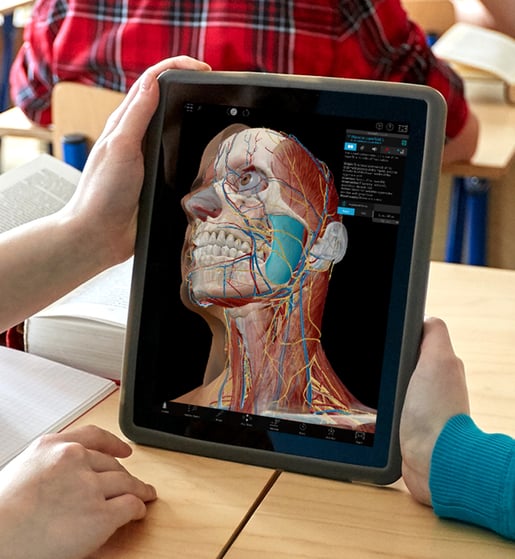The Latest in Anatomy Education Research
Posted on 12/9/22 by Sarah Boudreau
Anatomy instruction is evolving, and it’s important that instructors and administrators keep up-to-date. Here at Visible Body, we’re all about learning, so let’s look at five new publications that examine current practices and trends in anatomy instruction.
The flipped classroom + virtual anatomy tools
Worldwide, there is an increasing number of anatomy instructors who incorporate a flipped classroom model, and there is growing evidence that flipped classrooms enhance student performance through active learning. The authors of this paper in Anatomical Sciences Education set out primarily to determine student perceptions of how the combination of a flipped classroom and digital tools affected their education.
To study this, the authors looked at the bachelor of health science program at Swinburne University of Technology in Melbourne, Australia, which has been ranked as one of the world’s top 300 universities. Courses in this program are mostly lecture-based, and tutorial and practical classes are taught within the university’s Digital Anatomy Laboratory, where students use all virtual tools to explore anatomy, including AR, VR, and virtual dissection tables.
 Alveolar sacs in AR using the Human Anatomy Atlas mobile app.
Alveolar sacs in AR using the Human Anatomy Atlas mobile app.
The study looked at a neuroanatomy class and a regional anatomy class. Students learned from pre-recorded lectures and reading materials outside of class, and during class, they used digital tools to apply and enhance their knowledge.
Students in these classes had completed a foundational anatomy and physiology course which did not use the flipped classroom teaching model. At the end of the neuroanatomy and regional anatomy courses, participants were asked to complete a voluntary, anonymous survey that used the Likert scale. 84 students from the neuroanatomy class and 34 students from the regional anatomy class filled out the survey.
Here’s some of their results:
- About 70% of the participants agreed or strongly agreed that the flipped classroom model “helped their own independent learning”
- Over 70% of the participants reported that the flipped classroom helped them “understand difficult anatomy concepts”
- Over 80% of participants agreed or strongly agreed that “Digital anatomy tools enhanced my learning experience and interest in the course”
- Over 70% of participants agreed or strongly agreed that “I found digital anatomy tools very valuable, interactive and stimulating”
Thanks to positive feedback from students, anatomy courses within the School of Health Sciences at Swinburne University of Technology are shifting to the flipped classroom model.
Students prefer an integrated approach
Introductory anatomy and physiology is taught to about 450,000 students annually in the United States and Canada alone, and these subjects are either taught as combined (i.e. A&P I, A&P II) or as separate subjects (i.e., Anatomy, Physiology). The author of this paper in Advances in Physiology Education sought to determine student preferences regarding these two options. As they point out, student preference can contribute to student satisfaction and learning outcomes.
This study took place over three years at a large public university in the United States. One year into the study, the biology department decided to shift from discipline-specific courses to a combined A&P I and A&P II.
 Human Anatomy Atlas on a Clear Touch panel.
Human Anatomy Atlas on a Clear Touch panel.
The author surveyed a total of 2,459 undergraduate students at the beginning of their first semester taking anatomy or A&P I. The author found overwhelming support for an integrated A&P course. Before the department shifted to an integrated approach, 53% of students in the anatomy said they preferred discipline-specific courses, but when asked again at the beginning of their physiology course, 80% desired integrated A&P. At the beginning of A&P I, 80% of students were in favor of the integrated course, and at the beginning of A&P II, that number grew to almost 90%.
In the qualitative part of the survey, students who wanted integrated A&P often reported that they preferred a course that connected structure and function. Students frequently pointed out that anatomy and physiology “go hand in hand” and felt like an integrated approach would enhance their learning. Students who preferred a discipline-specific approach felt that integrated A&P would be overwhelming, and they felt that studying anatomy and physiology separately would allow them to go into further depth.
The vast majority of students preferred an integrated approach that allowed them to apply their anatomical knowledge to physiology.
Interactivity is key
The authors of this study were interested in how interactive learning could influence anatomy education at Grenoble Alpes University in Grenoble, France. This study looked at how a new, interactive program that incorporates a flipped classroom model, problem-based learning, and reciprocal peer teaching measured up against the traditional, lecture-based learning model for anatomy.
From September 2018 to December 2020, the authors looked at three consecutive groups of second year students at the Grenoble School of Medicine. In total, they looked at the exam grades and satisfaction survey results of 630 students.
The three groups of students were separated into clusters: every group contained six “control clusters” and twelve “intervention clusters.”
As second year students, the participants had already taken an anatomy course. The second year anatomy program involves 20 hours of anatomy instruction and 12 hours of dissections. For this study, all clusters were taught about upper limb anatomy, a subject they hadn’t covered in their previous anatomy course.
 Interactive 3D quiz in Human Anatomy Atlas.
Interactive 3D quiz in Human Anatomy Atlas.
The control clusters received traditional, lecture-based teaching, while the intervention clusters were taught using the new program, which incorporates flipped classroom, problem-based learning, and reciprocal peer teaching.
After looking at test results, the authors found that students taught with the interactive methods performed better on their exam.
Through student satisfaction surveys, students gave positive feedback for the new, interactive program. Many reported the following:
- They wanted their other courses to include interactive teaching methods.
- The new program helped them learn more effectively, as they listened better and had active participation.
- They felt more autonomous and more comfortable asking questions.
The anatomy program has not used flipped classroom, problem-based learning, and peer teaching methods for very long, but the authors are optimistic that with more time, “student grades might be even better and the program could produce students who are capable of understanding the complex clinical problems that they will encounter as practitioners.”
The best methods to teach surface anatomy
The authors of this paper conducted a meta analysis of publications regarding the instruction of surface anatomy. They examined 26 studies that evaluated the usefulness of various teaching strategies in teaching surface anatomy; most of these strategies were described as multimodal.
The authors identified three main themes: contextualized teaching, experiential learning, and learning facilitation.
Contextualized teaching emphasizes clinical context and connects surface anatomy to students’ future careers. This often includes problem-based learning, and it can offer opportunities for collaboration between students. Experiential learning takes this to the next level. Experiential learning occurs when students directly apply their knowledge in a hands-on experience. The authors also found that peer-facilitated learning and technology-enhanced learning play a key role in many successful anatomy classrooms.
How has anatomy education in medical school changed?
Medical school has changed a lot over the past decade, including the incorporation of team-based learning and new technologies. The pandemic demanded even more changes as accommodations had to be made for social distancing.
The authors of this paper sought to understand the effect of the pandemic on medical education and to chart the ways medical school is changing. They did this through sending out a survey with objective, subjective, and open-ended questions to the anatomy course directors of 145 Association of American Medical Colleges-associated allopathic medical schools—117 directors responded.
The authors found that before COVID-19, 90.6% of programs used cadaver dissection, and 11.1% used virtual software as primary interactive learning, while 64.1% of programs used virtual software as a supplement to other forms of hands-on learning. Before COVID, many programs decreased course time, integrated anatomy into other courses, and switched to the flipped classroom model.
To accommodate for the pandemic, 42.7% of schools used images of a prosected cadaver in lieu of dissection. Many also decreased course time, with decreasing hands-on time and class time in general. 78.6% reported slight or significant impacts on the quality of education due to COVID.
Currently, there’s a growing number of medical schools integrating anatomy education into organ-system blocks, and cadaver dissection remains a popular learning tool. A majority of institutions provide their students with a supplemental resource, like mobile device apps.
 Human Anatomy Atlas's mobile app.
Human Anatomy Atlas's mobile app.
Respondents said that a lack of practical learning negatively impacted anatomy education. According to the authors, this makes sense because anatomy requires an understanding of 3D relationships that is difficult to acquire through textbooks and 2D images.
In the near future, 23% of institutions plan on adopting mixed-reality or virtual software, while 13% plan on decreasing cadaver dissections.
More from the Visible Body Blog
You might like these other blog posts about pedagogy!
- Can Augmented Reality Improve the Learning Experience of Future Healthcare Professionals? (2022)
- What Instructors and Administrators Need to Know About Mobile Learning (M-Learning)
- Make Life Sciences Classrooms More Inclusive by “Shaking Up” Assessment
- Different Anatomy Tools Are Key to the Learning Process
- Reach More Students: Differentiated Instruction with Visible Body
Be sure to subscribe to the Visible Body Blog for more awesomeness!
Are you an instructor? We have award-winning 3D products and resources for your anatomy and physiology or biology course! Learn more here.



